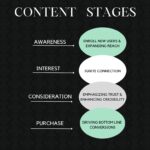Steven Heller of The Brand Liaison invited me to sit on his panel, “Creating and Implementing a ‘Wholistic’ E-Commerce Strategy.” With massive changes in the current retail landscape and brick-and-mortar retail environment continuing to decline, Steven brought together a panel of digital experts to help brands who are at a critical disadvantage without an eCommerce D2C platform. With our experience in Branding and E-Commerce, I highlighted several points that ALX Creatives finds crucial to succeeding online today. The following are a few of the topics Steven and I discussed.
Where does a company start if it’s looking to add Ecommerce?
When building your digital home, ie. your marketplace domain, there are a few steps to take before jumping directly into web development. First, you must fully understand your USP (Unique Selling Point) and brand—it’s essential to ask yourself, “what makes you, you?” Second, you must identify your customer and the value your company provides to them.
There are things you most likely won’t know before launching your marketplace domain—but you can shrink the list by finding a vendor to help you bridge that gap. For us (ALX Creatives), our first step in the onboarding process is to ask questions about the brand, demographics, goals, etc., to improve the probability of success during the site buildout.
The most important things to consider when developing your website.
Step one: Define your brand. We live for this. With branding, it’s your common lingo and visual identity internally, but also externally. Take Warby Parker, Bonobos, and Everlane for example. What do they have in common? Not only have they identified and filled a market gap, but they’ve also created a compelling user experience and unified branding to back it up.
Step two: Your team. Make sure you have the right tools in your tool kit—including the right people. The right team will identify the functions you need. You might already work with an incredible WordPress agency but what you need is a Shopify site. Or perhaps you might have a great developer that understands how websites work, but maybe they don’t know how to make the website look good at the same time! Make sure you have the right team to give you the tools that you need.
Selecting the right eCommerce host (i.e., Shopify vs. WordPress):
How does one choose the right eCommerce host? The short answer is to do your research! Are you searching for a platform that’ll provide autonomy and flexibility, or are you looking for a platform that’s easy to use? If you need an open-source, flexible platform, I recommend looking into WordPress. However, if you’re looking for a platform built specifically for eCommerce, Shopify might be the best option—albeit at times more limiting, it’s definitely easier to use.
Keep in mind that the deeper questions here might be, how does your CMS (Content Management System) connect with the other systems you have in place, and how can you automate the process? Your eCommerce site is more than just a commerce platform. It goes BEYOND your website, in that it also lives in sync with your marketing campaigns, email campaigns, etc.
The mistakes companies make when building their website.
What are some of the biggest mistakes companies make when building their website? First, disconnecting the user vs. consumer. Brands should remove any point of friction that conflicts between both the user and the consumer experience. The path to purchase should be a seamless and intuitive process. Second, distribution and traffic don’t happen overnight. It’s imperative to have a strategy. People won’t find your site just because it exists in the ether!
And finally, don’t expect to pay for a Honda and get a Mercedes! Ask yourself, do I need a Mercedes-level spend for this project? Make sure what you are creating works but also meets your company’s needs.
Want to learn more about how much start-up branding should cost? This article breaks out spend based on an overall company budget.
Mobile optimization:
Every consumer site must be optimized for desktop and mobile. While eCommerce has been rapidly on the rise in recent years, it has accelerated ten-fold due to the pandemic. “mCommerce” (mobile commerce) is the next true frontier for shopping, and it’s time to get on board if you haven’t already.
Post-development: Marketing and SEO:
The main goal of SEO (Search Engine Optimization) is to capture the people looking for you. Think about what keywords you use to search on Google. Prospective customers aren’t going to stumble upon your website just because it exists! SEO is part of a larger digital marketing strategy that helps generate traffic to your website. Regarding strategy, there are basically two moving parts. The first is organic SEO, which includes web best practices (load time, backlinking, etc.) as well as content marketing (like blogging). The second is paid SEO (such as Google Ad Words), which can be expensive. Note that if you have ZERO organic social content but a strong paid social campaign, prospective customers may not trust your brand.
Digital marketing in 2021:
As we all know, the pandemic has changed the way eCommerce looks. Digital acceleration has been happening for a while, but the pandemic pushed it forward by years. In today’s world, customers want more choices than ever before, and online shopping isn’t limited in the way that brick and mortar is. Shoppers also love to browse just as much online as they do physically. This is why content has become king—content strategy has shifted toward social media to meet customers right where they are: browsing social media. Businesses can use tools like social media to drive demand based on where people are located, too.
With that said, if the customer has to work harder than necessary to achieve a goal (such as checking out with a cart), they will feel unnecessary friction. The customer needs to have a smooth user experience when navigating a mobile site, and this is where a highly mobile-friendly site becomes imperative. In addition to having a 100% responsive site, a clear CTA (Call-To-Action), simple navigation, usable forms, and click-to-call functionality are crucial to a seamless mobile experience.








